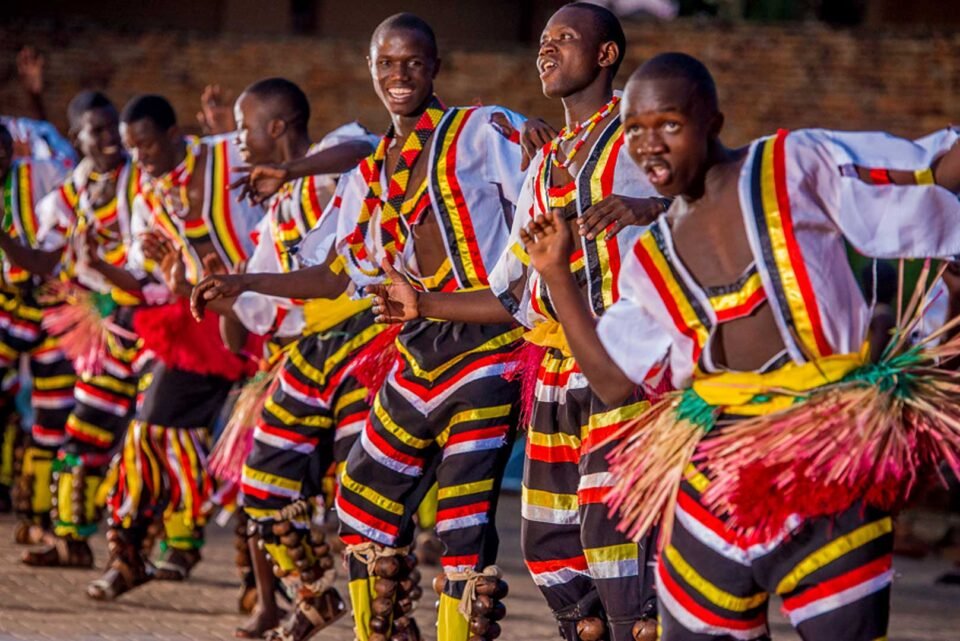Uganda, famously known as the “Pearl of Africa,” is a country rich in cultural diversity. It is a place where over 50 different ethnic groups live, each with its own unique language, customs, and traditions. This blend of cultures creates a vibrant and fascinating tapestry that reflects the country’s long history and the spirit of its people. Understanding the culture of Uganda means appreciating the deep-rooted traditions that shape daily life, from the food we eat to the music we dance to.
The People: A Mosaic of Ethnic Groups
The cultural landscape of Uganda is defined by its many ethnic groups, which are broadly divided into two main linguistic groups: the Bantu-speaking people in the south and west, and the Nilotic and Nilo-Hamitic-speaking people in the north and east.
- The Baganda: This is the largest ethnic group in the country, and their kingdom, Buganda, has a huge influence on Uganda’s history and culture. The capital city, Kampala, is located in Buganda. The Baganda are known for their strong social structure, with a powerful king, the Kabaka, at the top. Their traditional dress is the gomesi for women, a beautiful long dress with pointed shoulders, and the kanzu for men, a white or cream-colored robe. Their staple food is matooke, a steamed green banana dish.
- The Banyankole: Found in the southwestern part of Uganda, the Banyankole are traditionally cattle keepers, known for their long-horned cattle. The Banyankole are divided into two main groups, the pastoral Bahima and the agricultural Bairu. Their culture is very much tied to their cows, and their dances often imitate the graceful movement of the long-horned cattle.
- The Acholi and Langi: These Nilotic-speaking groups live in northern Uganda. They are known for their vibrant music and dance, particularly the Larakaraka dance, a courtship dance performed at weddings and other social gatherings. Their history is marked by strong clan ties and a deep respect for elders.
- The Basoga: Living in eastern Uganda, near the Busoga Kingdom, the Basoga are known for their lively “Tamenhaibunga” dance, which celebrates friendship and unity. Their food, like that of many other groups, includes various stews and starches.
Food and Cuisine: A Taste of Uganda
Ugandan cuisine is simple, fresh, and hearty. It is a mixture of indigenous flavors and influences from British, Indian, and Arab cultures. The main meal usually consists of a starchy staple served with a sauce or stew.
- Matooke: This is arguably Uganda’s national dish. It is made by steaming green bananas in banana leaves until they are soft and then mashing them. It is often served with a rich groundnut (peanut) sauce or a beef, chicken, or fish stew.
- Posho: A popular and cheap food made from maize flour, it is cooked into a thick porridge-like consistency. It is a main source of carbohydrates and is served with various sauces.
- Luwombo: A special dish from the Buganda kingdom, this is a stew (of chicken, beef, fish, or mushrooms) steamed in a banana leaf. It is a delicious and flavorful meal often served at big celebrations.
- Rolex: This is a famous Ugandan street food. It has nothing to do with the watch brand; the name comes from “rolled eggs.” It is a simple but tasty dish made by rolling a fried egg omelette with cabbage, onions, and tomatoes inside a chapati (flatbread).
Music and Dance: The Heartbeat of a Nation
Music and dance are at the very heart of Ugandan culture. They are not just for entertainment; they are used to tell stories, celebrate important life events, and pass down traditions from one generation to the next.
- Drums: The drum, or engoma, is the most important musical instrument in Ugandan culture. There are many different types of drums, and each ethnic group has its own unique drumming style and rhythm.
- Traditional Dances: Each tribe has a signature dance. The Bakisimba dance of the Baganda is a joyful dance that was once performed for the royal family. The Ekizino dance of the Bakiga people is a high-energy dance that involves a lot of foot-stamping and is a sign of their hard work and strength. The Ekitaguriro dance of the Banyankole beautifully imitates the movement of their cattle.
Customs and Traditions: Respect and Community
Ugandan culture is built on a foundation of hospitality, community, and respect, especially for elders. When you visit a home, it is customary to be offered a meal, and it is a sign of friendship to eat together. Greetings are very important, and using two hands to shake someone’s hand is a sign of respect.
The family is also a central part of life, with extended families often living together or close by. Traditional ceremonies for events like births, marriages, and funerals are very significant and are often celebrated with music, dance, and food.
In short, the culture of Uganda is a living, breathing thing that is constantly evolving while still holding on to its rich past. It is a culture of warmth, resilience, and joy, which is truly what makes Uganda the “Pearl of Africa.”

